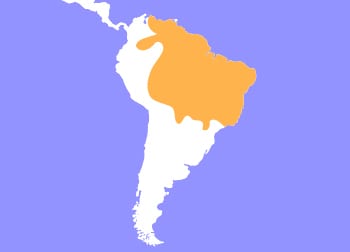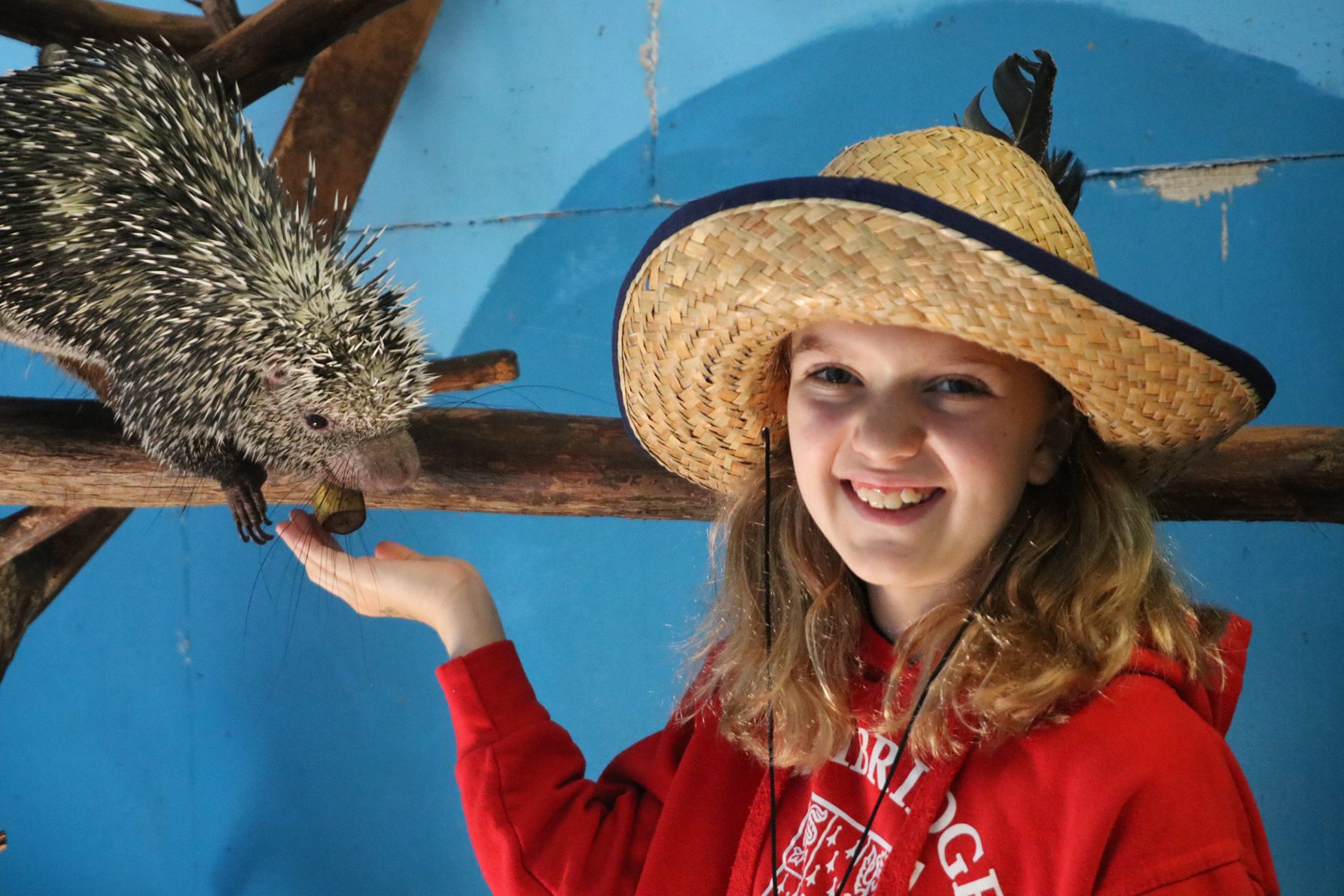Prehensile Tailed Porcupine
Coendou
These tree dwelling porcupines are native to Central and South America. One of the most notable characteristics of this porcupine is its unspined prehensile tail. Prehensile means capable of grasping, meaning they can use their tail as a third arm, grasping tree branches with its tail. They weigh from 5 to 10 pounds, their bodies are 1 to 2 feet long and their tails are almost as long as their bodies, adding another 1 - 1.5 feet.
They are herbivorous animals, in the wild they feed on leaves, shoots, fruits, bark, roots, and flower buds. When these porcupines are first born they don’t have quills, rather soft hair that quickly hardens to quills with age. When threatened these porcupines have a spiky defense mechanism to keep them safe, they will roll into a ball and shake their quills. Rolling into a ball protects their soft underbelly, they will also stamp their feet and try to bite adversaries. These animals are nocturnal and arboreal, spending their days sleeping in hollows, tangled vines, and high limbs. Prehensile-tailed porcupines can be solitary, live in pairs, or small groups in the branches of trees.

Prehensile Tailed Porcupines are native to South America.
HABITAT -They inhabit the trees and forest canopies of Central and South America.
DIET -They are herbivorous, eating leaves, shoots, fruits, bark, roots, and flower buds.
FUN FACT -These porcupines use their prehensile tails to grasp onto tree branches!
SOCIAL BEHAVIOR -Prehensile-tailed porcupines can be solitary, live in pairs, or small groups.
ACTIVITY -They are nocturnal being most active during the evening and resting during the day.
PREDATORS -Humans are the biggest predators, being used for meat, feral dogs may also attack them.
SIZE -They are 1 to 2 feet long, not including their 1 - 1.5 foot tail. They weigh from 5 to 10 pounds.
RELATIVES -There are over 15 different species of porcupine in the Coendou genus including the Andean porcupine.
CONSERVATION -The Prehensile-tailed porcupine is categorized as LC (Least Concern) by the IUCN.
Cub Creek Animal Care Information
Housing - Our prehensile-tailed porcupines inhabit a specialized enclosure giving them plenty of room to explore around. You’ll find tree branches, ramps, and a large window to allow for natural light. Having tree branches and wooden limbs throughout the enclosure makes for a more simulated canopy environment. The enclosure is bedded with shavings, and they always have access to clean water.
Diet - We feed our prehensile-tailed porcupines a balanced diet that starts with primarily fruit! They love to eat apples, bananas, and other sweet treats. We also supplement this with a variety of vegetables and sweet potato.
Enrichment - Our prehensile tailed porcupines get plenty of time, love, and affection by our animal team and campers! They are very accustomed to human interaction, and are very curious and playful, especially when bananas are involved! Campers will make them special enrichment toys during the summertime as well, these are usually made from cardboard, which they love to chew on with their large incisors. Campers will also make them special fruit treats like frozen popsicles!


